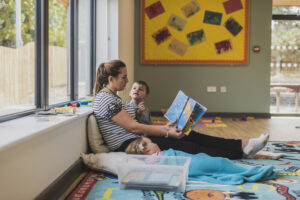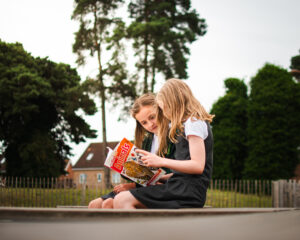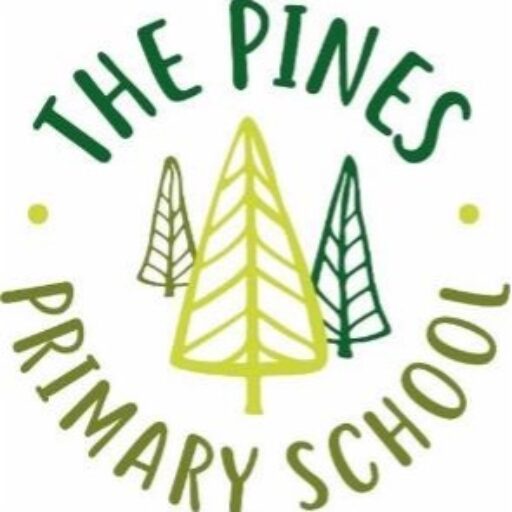Phonics
Teaching of reading- Through Phonics
In Early Years, Year 1 and Year 2, children are taught synthetic phonics on a daily basis for around 20-30 minutes. Letter sounds and common exception words are introduced using the Rocket Phonics Programme. In each session children practise blending (putting sounds together to make words), segmentation (breaking words into sounds) and high frequency/common exception words. Children are taught on a whole class basis through the main strategy of ‘my turn’ (where a teacher models how to read), ‘together’ (where teachers and children read together) and ‘your turn’ (where children read on their own). In addition, phonics in the Early Years is reinforced through guided writing and continuous provision activities on offer during independent exploring sessions. Staff observe and interact to extend their learning. In Years 1 and 2 children may also participate in small group phonics work during their English lessons too. We teach the children in their own year groups. The children have differentiated phonic application activities in addition to the whole class teaching.
Children are assessed and tracked every half term. This way we can monitor the progress the children are making and put support and challenge in place for children.
Early Years
In Early Years the teaching of reading is taught through:
Daily Phonics sessions.
Differentiated reading and spelling application- daily.
Each phonics session will follow the structure of:
Review– We will revisit the sounds already taught in a pacey and fun way.
Teach– The children will learn a new sound. They will link the sound to a rhyme and a mnemonic phrase to support the children to learn the correct letter formation. The children will also use gross motor movement to practise ‘air writing’ the graphemes.
Oral practise (segmenting and blending words)- The teacher will model how to segment words using the sound the children are learning. Teachers assess the children’s ability to orally blend and segment here. Allow the children to make independent attempts and blending the words.
Apply– Reading- The children will learn how to use their phonetic knowledge to decode words using the new sound. Using the strategy of ‘my turn’ (where a teacher models how to read), ‘together’ (where teachers and children read together) and ‘your turn’ (where children read on their own) Extending to sentences as their knowledge grows.
Apply– Writing- The children will learn how to use their phonetic knowledge to spell words using the new sound. Using the strategy of ‘my turn’ (where a teacher models how to spell), ‘together’ (where teachers and children orally spell together) and ‘your turn’ (where children spell on their own) Extending to sentences as their knowledge grows.
CEW– practised daily through ‘Rap-to-Read’

Key Stage 1
In Year 1 the children continue to learn the most common way of representing each phoneme with a variety of different graphemes. These increase in complexity and the children progress to learn alternate spellings for each phoneme and learn about the spelling rules. (in Year 2 for children still consolidating previous sound knowledge-those who did not pass the Y1 Phonics screen may be part of an intervention).
The teaching of phonetic decoding is taught through:
Daily Phonics sessions. The children will use white boards/workbooks to practise applying the phonemes. Differentiated through teacher led application activities.
Each phonics session will follow the structure of:
Review– We will revisit the sounds already taught in a pacey and fun way. The children will say and speed write random sounds.
Teach– The children will learn a new sound. They will link the sound to a rhyme and a mnemonic phrase to support the children to remember the sound and to know when to use it. The children will practise reading and writing the sound.
Apply– Reading- The children will learn how to use their phonetic knowledge to decode words using the new sound. Using the strategy of ‘my turn’ (where a teacher models how to read), ‘together’ (where teachers and children read together) and ‘your turn’ (where children read on their own)
Apply– Writing- The children will learn how to use their phonetic knowledge to spell words using the new sound. This will follow the following structure: Listen, show, touch, write, check- using ‘Fred’ fingers.
Apply- reading sentences. Children decode sentences by the teacher modelling how to do so. Picking up on grammar and punctuation where appropriate.
Writing sentences- Teacher to model how to ‘hold’ a sentence and write.
HFW/CEW– practised daily within the phonics slides. Speed read and spell.

Assessment
Phonics
Children’s knowledge of reading letter combinations, high frequency and common exception words is assessed half-termly. Each child has an assessment sheet called a Phonics Profile. They are assessed at the phase that they are currently working within. This information is put onto a phonics tracker grid for each class. Teachers will identify who is not achieving age-related expectations and decide on actions for intervention together.
Reading
When children are ready, teachers will carry out a running record to ensure that a child’s current reading book is the correct level. At the end of each half term, teachers put children’s names onto a reading tracker grid for their class. Teachers will identify who is not achieving age-related expectations and decide on actions for intervention together.
Phonic interventions – Early Years and Key Stage 1
Phonics and reading
There are coloured cells on the tracker grids, which indicate where children should be at any given time in Early Years (Spring and Summer term only), Year 1 and Year 2, to be ‘on track’. Children who are not on track will be discussed with team and together we will decide on actions for intervention.
Intervention groups for children not ‘on track’ in phonics and reading:
- Small group alternative phonics
- Extra 1:1 reading
- Parent reading partnerships
- Precision teaching
- Teacher led additional sessions.
